IDP New Website Launch
We are pleased to announce the launch of the newly redeveloped International Dunhuang Programme (IDP) website, hosted by the British Library. The IDP was established in 1994, following a conference that gathered representatives of institutions with materials from Dunhuang. It integrates the collections of over 35 partner institutions worldwide, including the National Library of China, the Dunhuang Academy, the Bibliotheque nationale de France (BnF), Ryukoku University and the Berlin-Brandenburg Academy of Sciences and Humanities (BBAW). This pioneering international collaboration brings together online materials from the Eastern Silk Roads and promotes better understanding of the history and culture of the region. It provides access to images and information about manuscripts, printed materials, historical photographs and other items.
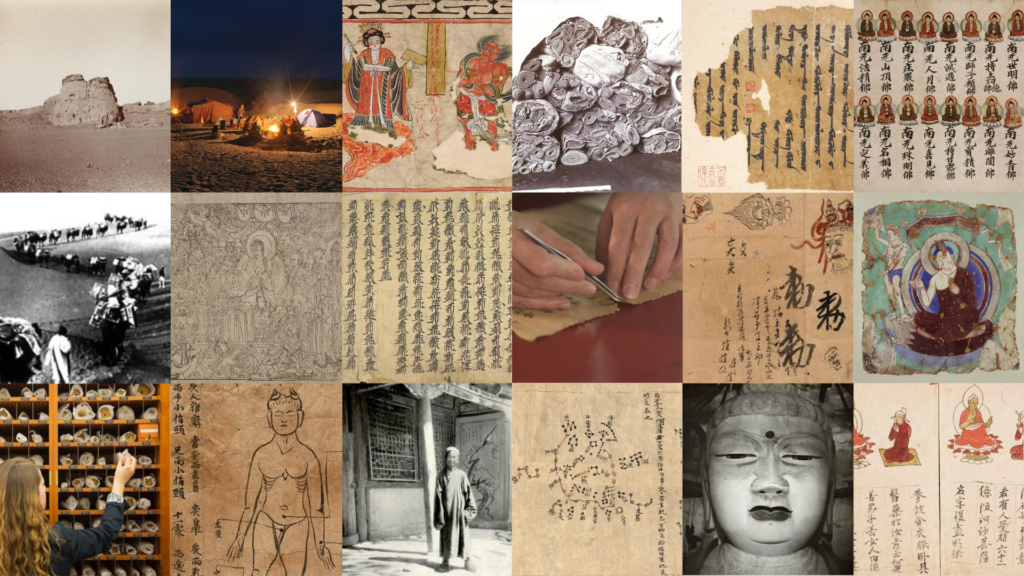
The launch of the new website is a significant milestone in the history of the International Dunhuang Programme, (formerly International Dunhuang Project), which also coincides with its 30th anniversary. The platform’s refreshed visual identity with a brand-new logo and slightly modified name, where ‘Project’ replaces ‘Programme’, better reflects the scope and ambition of the IDP as a long-term partnership. The website also presents an improved search capability, IIIF image viewing functionalities, alongside new contextual resources. This is the result of two years of sustained efforts by the IDP Website Project team and our developers, Surface Impression and Knowledge Integration. Our work was made possible by the generous support of The Polonsky Foundation and benefitted from the expertise and advice of many colleagues and peers at the British Library, partner institutions and across our network.
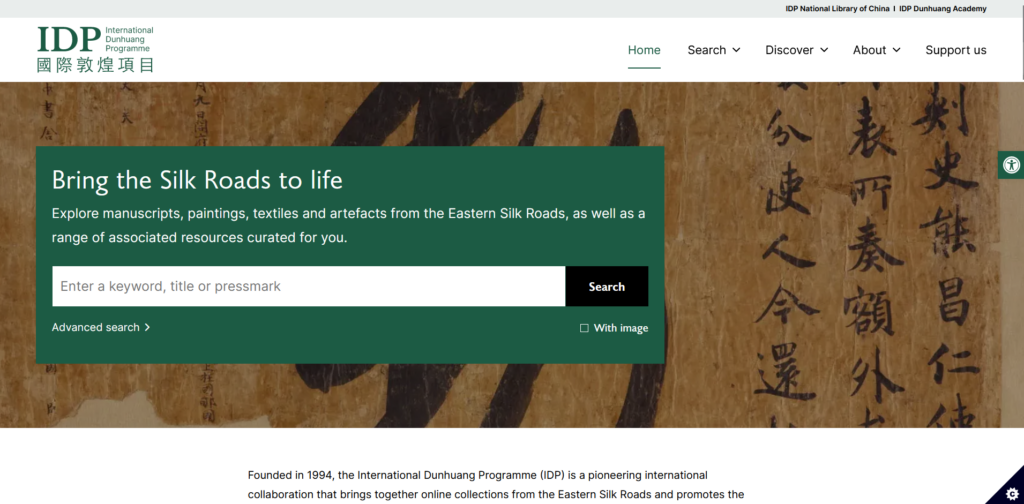
The IDP website was first launched in 1998. It was comprehensively updated in 2005, and again in 2012. This time round, the platform has been significantly improved and redesigned with the needs of both researchers and members of the wider public in mind. While the Chinese versions of the IDP website hosted by the National Library of China and the Dunhuang Academy will be maintained, it was agreed that the German and the French versions respectively hosted by the BBAW and the BnF would be decommissioned. Their collections will be served from the English website. The present blog post gives an overview of a few of the key features that have been introduced as part of the IDP website redevelopment project.
We implemented an Elasticsearch engine to guarantee better accuracy and relevance of results when using the traditional keyword search. This allows users to pull and triage content from across the IDP’s vast collection database (‘Collection only’) and static pages (‘Website only’), such as bibliographic references, blog posts, learning resources and former IDP Newsletters. In addition to this, the website now provides the option to conduct faceted searches, facilitating the refining and customising of results through various filters. We have also created customised search relationships that capture the variety of diacritical marks in the metadata and relate search terms in different languages. These enhancements align the IDP website with modern search engine functionalities while retaining the specificity required by our specialist data.
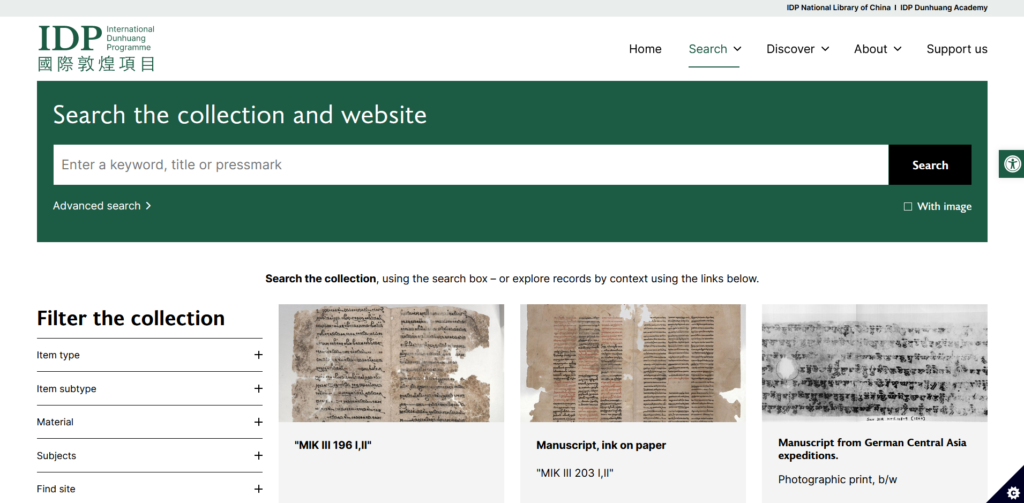
As part of our quest for an improved user experience, we have endeavoured to support deeper engagement with the collections through new features such as the collection category pages, which are an alternative way of searching the database. These aggregate objects by archaeological site, material type, holding institution and provenance. Each entry comes with a brief overview of the subject matter (for instance, a description of the site of Dandan Uiliq complete with geographical coordinates and date range) followed by a list of star objects. We hope that this offering encourages website visitors that are less familiar with the collections available on the IDP to browse them, giving them the possibility to delve into the histories and cultures of the Eastern Silk Roads from many different angles.
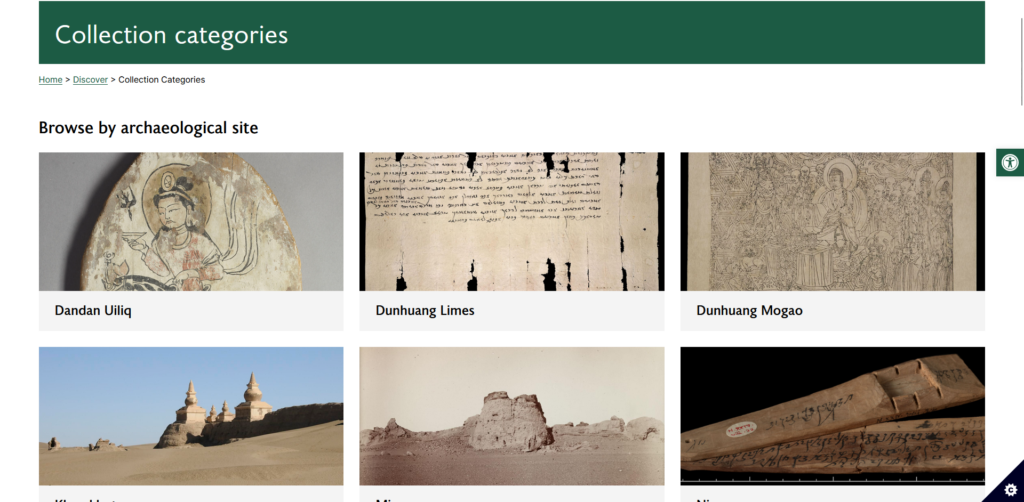
Users now have the choice between two image viewers: Mirador and Universal Viewer. Both are compliant with the International Image Interoperability Framework (IIIF), a leading standard adopted by libraries and museums to deliver high-quality digital assets across a broad variety of technical environments. One of the key features of the viewers is the ability to deep zoom into collection images. Moreover, our Mirador viewer has been specifically adapted to display scrolls and non-standard book items in a more intuitive fashion. It dynamically interacts with the metadata contained within the database, adjusting the viewing window to present each object more effectively. Changes include displaying images horizontally or vertically depending on the item format, orientating the image order based on textual reading direction, and segmenting image sets in the thumbnail view for ease of navigation.
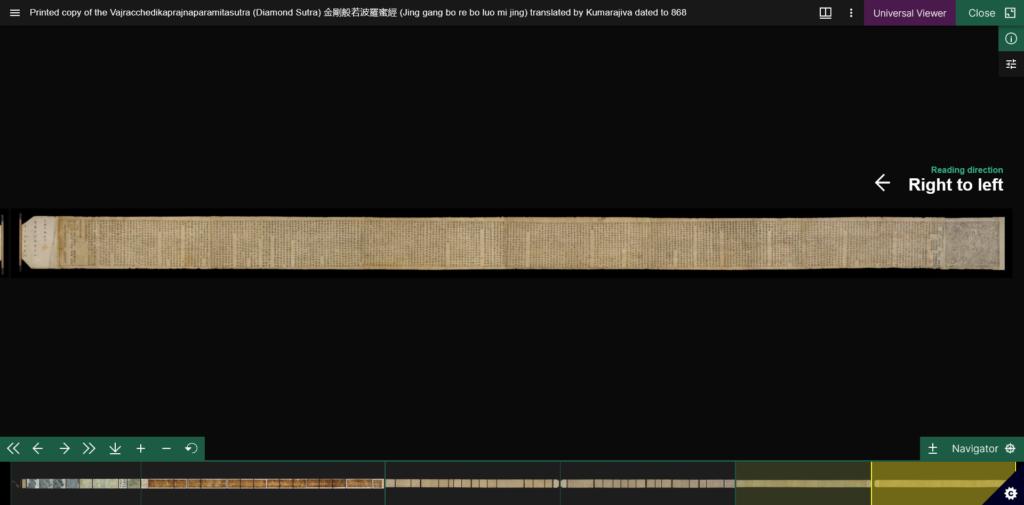
The Discover pages of the website contain resources and relevant information about events or activities that support the study of the Eastern Silk Roads. The newly-integrated blog creates a space to highlight news and research. Blog posts and IDP Newsletters from the previous website are still available to users on the new version of the website. We further pursue our mission to promote education about the histories and cultures of the Silk Roads through our learning resources. These include themes such as ‘Buddhism on the Silk Roads’ and behind-the-scenes features focussing on conservation and digitisation work on the collections that have been completely revised and tailored to a wider audience. Further themed content will be rolled out in the coming months.
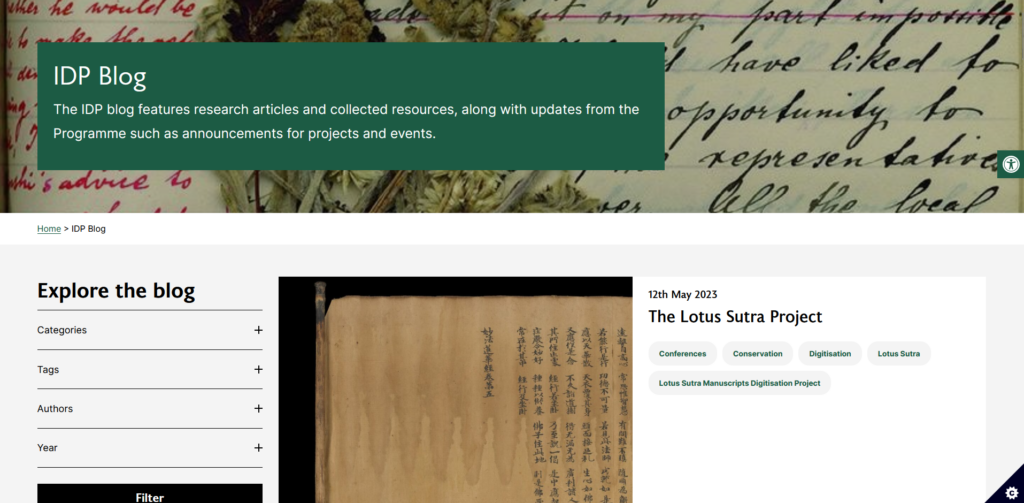
Overall, we hope that the new features, updated look and more user-friendly interface provides a platform to better promote the work of the International Dunhuang Programme and its partners, and expand knowledge of materials from the Eastern Silk Roads. The cyber-attack on the British Library in October 2023 has had a significant impact on many of our services. In this phase of recovery, we are proud to have been able to restore access to the International Dunhuang Programme’s digital content. Please note that not all content is currently available, and we will continue to ingest metadata and images in the coming few months. We appreciate your patience through this process and will make sure to inform you of our ongoing progress. You can follow the IDP’s account on X (formerly known as Twitter) (@idp_uk) for further information as new resources become available.


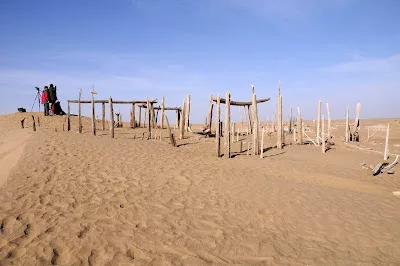

If you have feedback or ideas about this post, contact us, sign in or register an account to leave a comment below